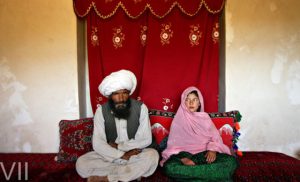UN programme to help spare millions from child marriage, extended to 2023
Millions of girls have been able to avoid “an unwanted marriage and an unwelcome end to their childhood”, since the launch four years ago, of a joint UN agency programme, the head of the UN Children’s Fund (UNICEF) said on Tuesday.
The UNFPA-UNICEF Global Programme to End Child Marriage, a multi-country initiative to help protect the rights of millions of girls, was launched in 2016 with the involvement of families, educators, health providers, governments, as well as religious and community leaders, with the ambitious aim of ending the practice by 2030.
And it will be renewed for an additional thre years, according to UNICEF and the UN Population Fund (UNFPA), which works to advance sexual and productive health. Since then, it has helped more than eight million adolescent girls and more than five million community members, with information, skills and services.
By 2023, the programme aims to have reached more than 14 million adolescent girls across 12 countries in Africa, the Middle East and South Asia.
Despite the progress so far, “12 million girls are still marrying in childhood every year, causing irreversible damage to their future, health and well-being”, said UNICEF Executive Director Henrietta Fore. “The next four years of the programme are critical to driving momentum and action and ending this devastating practice once and for all”.

Generation Equality
The second phase of the programme was launched in the context of the Generation Equality campaign, which focuses on issues facing women across multiple generations, with young women and girls at the centre.
It will continue to focus on proven strategies, including increasing access to education and health care services for girls, educating parents on the dangers of child marriage, as well as promoting gender equality and enforcing laws that establish 18 as the minimum marriage age.
The programme will also emphasize the importance of using robust data and evidence to inform policies related to adolescent girls.
“As long as girls are being married as children, we cannot achieve the gender-equal world that young people are demanding”, said UNFPA Executive Director Natalia Kanem. “Girls should have the power to make their own choices about when and whom they will marry, about continuing their education, and about whether and when they have children”.
The scheme has also supported governments to develop and implement national strategies to end child marriage.
Much work to be done
Worldwide, an estimated 650 million girls and women alive today were married as children, with nearly half living in countries supported through the Global Programme.
While South Asia has led the way in reducing child marriage over the last decade, the global burden has shifted to sub-Saharan Africa, where rates of progress need to be scaled up dramatically to offset population growth.
Nearly one in three recently-married girls are now in sub-Saharan Africa, compared to one in five, a decade ago.
In Latin America and the Caribbean, the prevalence has remained stagnant for the last decade.
Lifelong consequences
When a girl is forced to marry as a child, she faces immediate and lifelong consequences.
Her odds of finishing school decrease as those of experiencing domestic violence rise.
Moreover, her chances of becoming pregnant during adolescence are higher and she is more likely to die of complications in pregnancy and childbirth. There are also huge societal consequences, and a higher risk of perpetuating intergenerational cycles of poverty.
To end the practice by 2030 – the target set out in the Sustainable Development Goals (SDGs) – progress must be significantly accelerated. Without further acceleration, in ten years more than 120 million additional girls will marry before their 18th birthday.
“The Global Programme is committed to empowering girls to exercise their rights, fulfill their potential, and drive change in their communities”, Dr. Kanem spelled out.
Source: UN News


